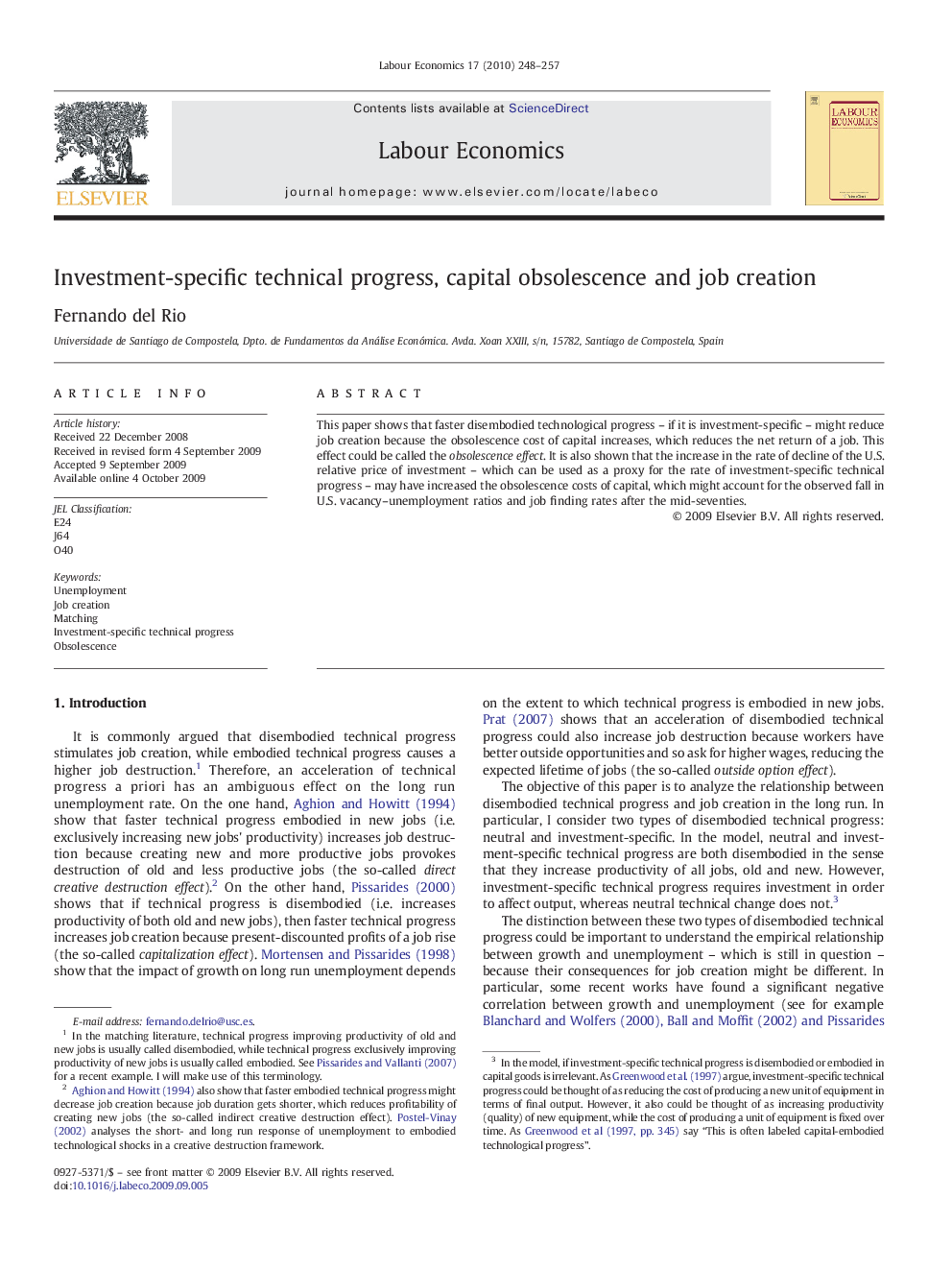| Article ID | Journal | Published Year | Pages | File Type |
|---|---|---|---|---|
| 971903 | Labour Economics | 2010 | 10 Pages |
Abstract
This paper shows that faster disembodied technological progress – if it is investment-specific – might reduce job creation because the obsolescence cost of capital increases, which reduces the net return of a job. This effect could be called the obsolescence effect. It is also shown that the increase in the rate of decline of the U.S. relative price of investment – which can be used as a proxy for the rate of investment-specific technical progress – may have increased the obsolescence costs of capital, which might account for the observed fall in U.S. vacancy–unemployment ratios and job finding rates after the mid-seventies.
Related Topics
Social Sciences and Humanities
Economics, Econometrics and Finance
Economics and Econometrics
Authors
Fernando del Rio,
